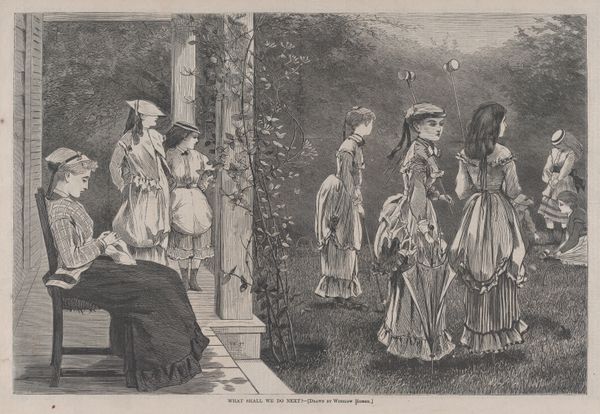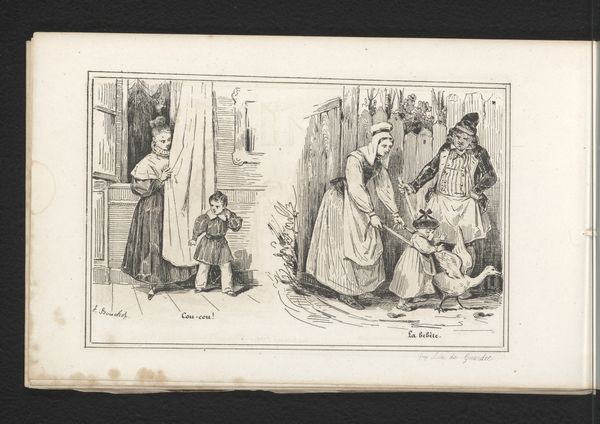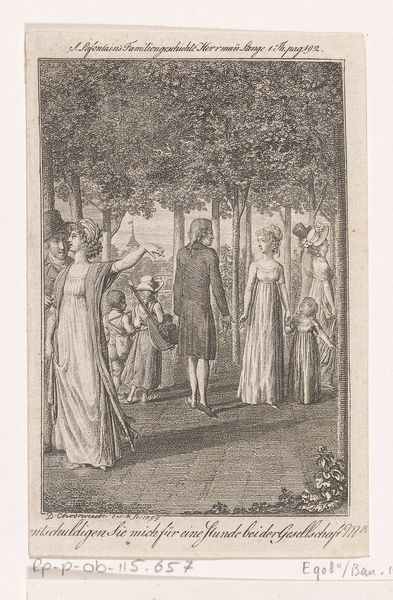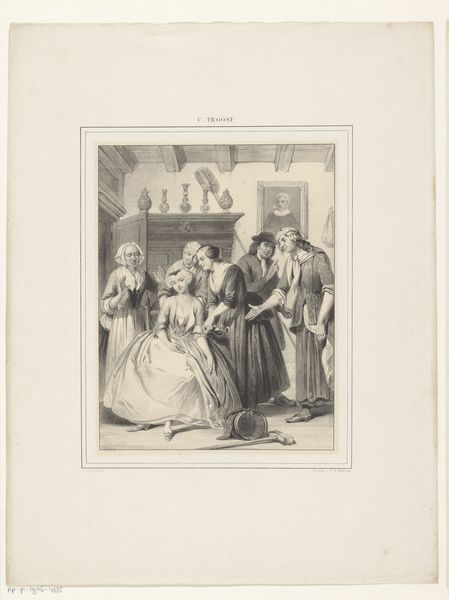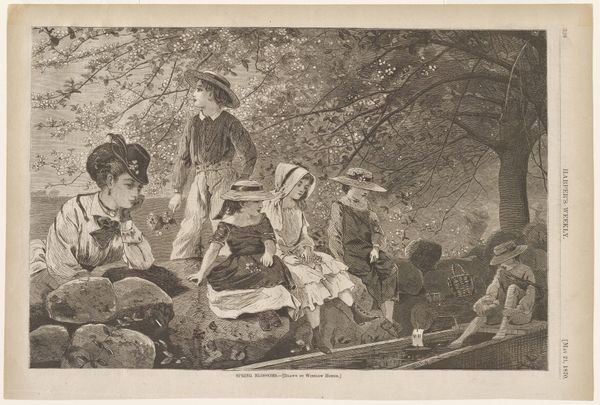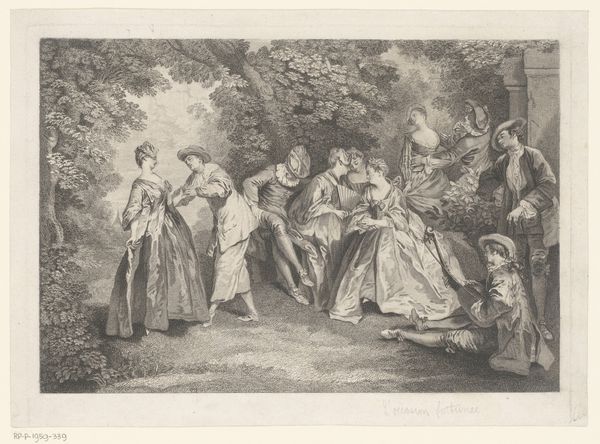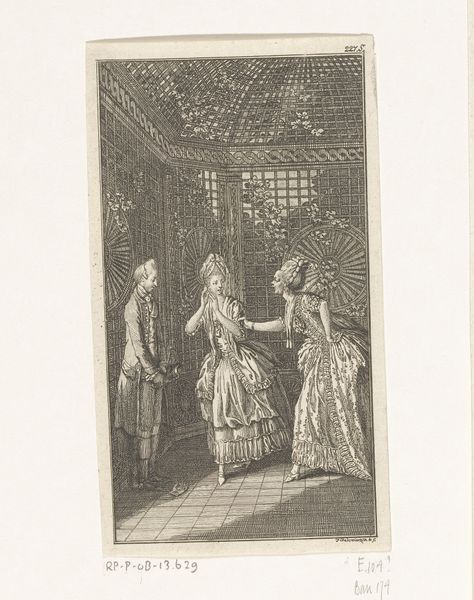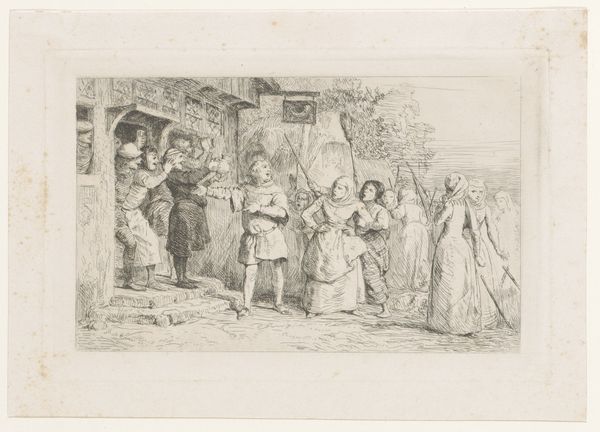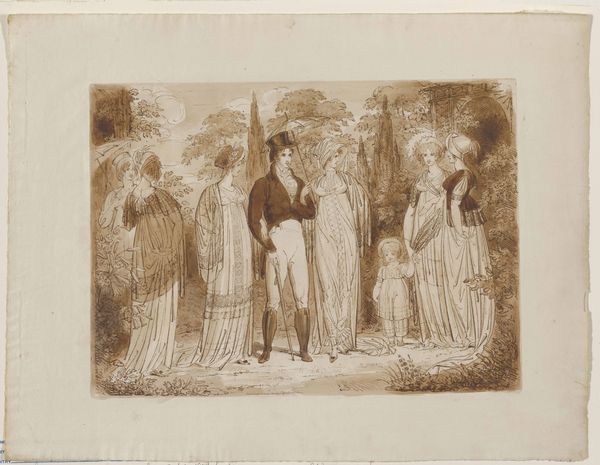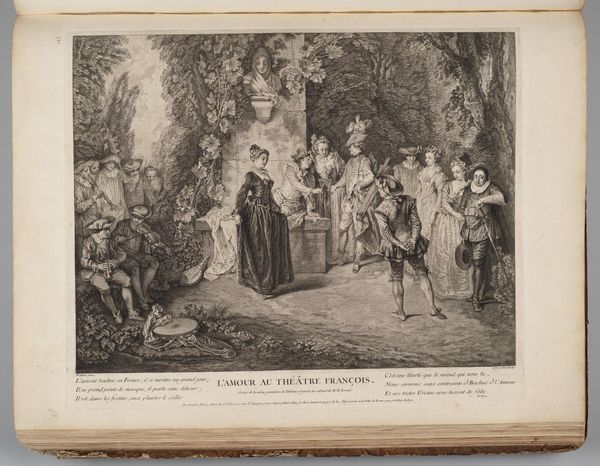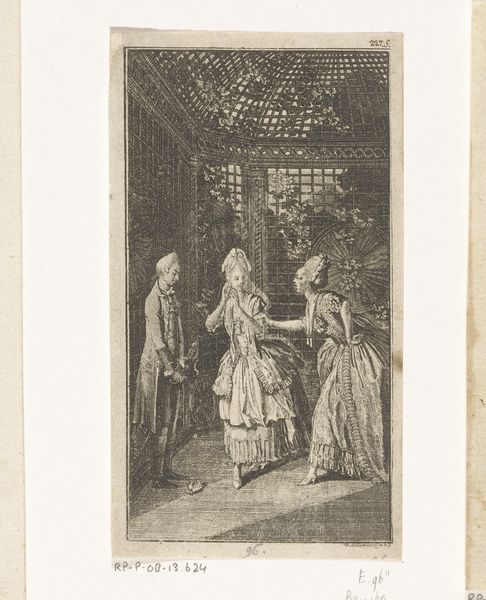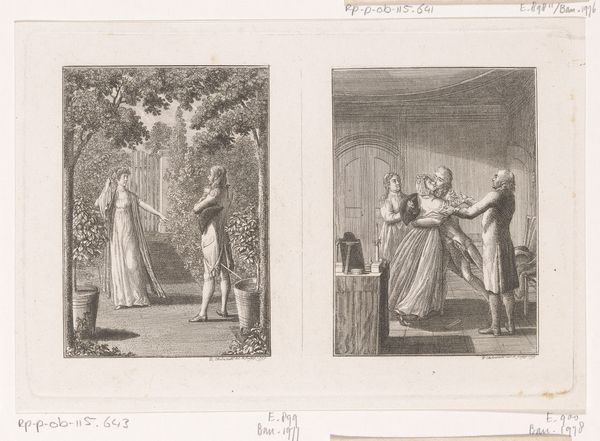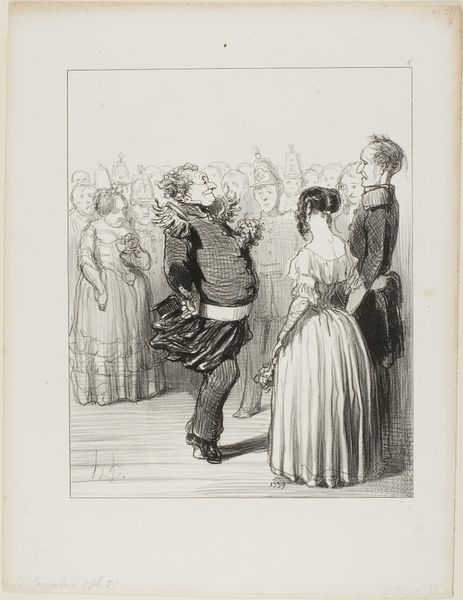
Dimensions: 9 1/8 x 13 11/16 in. (23.2 x 34.8 cm)
Copyright: Public Domain
Editor: So this is Winslow Homer's "What Shall We Do Next-", a wood engraving from 1869. It has this serene, summery feel, but I'm also picking up a kind of... listlessness? What do you see in this piece, especially considering the time it was made? Curator: That "listlessness" is key. It’s tempting to read this as a simple scene of leisure, but it's crucial to remember the context. Post-Civil War America was grappling with reconstruction, shifting gender roles, and industrialization. Homer often depicted women in relation to these societal shifts. How might this group of young, presumably privileged white women, represent a specific ideal or a reflection of anxieties within that period? Editor: I hadn’t thought about it that way. Their inactivity almost feels like a commentary, then, on the limited roles available to them. The title "What Shall We Do Next-" feels heavy now. Curator: Precisely. And consider where this image was published – Harper's Bazaar. A magazine geared towards women, shaping and reflecting their aspirations. This image isn’t just depicting reality, it's constructing a narrative. What's interesting is how the ambiguity of "what to do" can be seen both as a personal dilemma and a wider cultural question for women in that era. Are they really free if their options are so... circumscribed? Editor: That gives me a totally different perspective. The artwork really sparks dialogue around those roles! It made me question the lack of choices for women at the time and compare it to nowadays. Curator: Absolutely. Art serves as a mirror and a lens, reflecting back societal norms and allowing us to scrutinize them through time.
Comments
No comments
Be the first to comment and join the conversation on the ultimate creative platform.
